Movies & TV / Columns
Top 20 Worst Films of 2020 (#10 – 1)
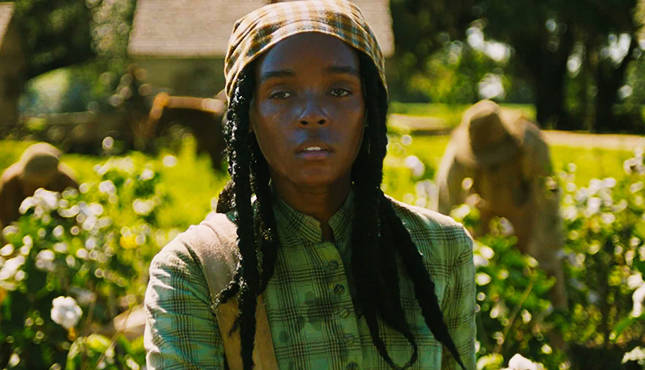
Welcome, one and all, to part two my Movies Year in Review for 2020! I’m your host Jeremy Thomas, and today we’ll concluding our look at the worst films of the past 12 months before we get to the best next week. Keep in mind that this list is meant to be my personal opinion and not a definitive list. You’re free to disagree; you can even say my list is wrong, but stating that an opinion is “wrong” is just silly. With that in mind, let’s get right in to it!
Earlier this week we saw the top half of my “worst of” list. As I noted before, with the 8 Ball no longer keeping me to the top 8 format (or a two-part top 16), I’ve decided to expand to an even 20. The first part looked at #20 through 11 and if you thought those films were bad, oh my folks. Just wait until you see what we’ve got for the bottom 10. Might as well rip the Band-Aid right off, so let’s get to it!
Caveat: My criteria used to be that if the film had its domestic theatrical release this year, it was eligible. Obviously, that would lead to a very short list of films for 2020. Not only that, but the business is changing anyway (a move that’s long been needed), so I’m altering my structure a bit. If a film was released in theaters in any remotely significant capacity, or if it was a high-profile and marketed release on VOD or a major streaming service, then it was eligible. I don’t include films that are purely straight-to-video and may have a star or two, but is essentially being shoveled out to reap in some profit on some name value. 2020 examples of this include Survive The Night (Bruce Willis), Last Moment of Clarity (Samara Weaving), and The Night Clerk (Tye Sheridan, Ana de Armas, John Leguizamo and Helen Hunt). There’s obviously some wiggle room on some of these and people may debate if some films are really “high-profile releases,” but that’s why it’s my list.
The only other caveat is that I have yet to seen everything that was released in 2020, especially factoring in streaming services. The films that I missed that could have possibly qualified based on reputation are Tyler Perry’s A Fall From Grace, Songbird, 365 Days, Irresistible, Wild Mountain Thyme and Fatal Affair. Other than those, I feel reasonably confident I would have seen every movie that would have likely made the list. For those curious, I saw a total of 117 films that were released in 2020.
Just Missing The Cut
• I Still Believe
• Seberg
• The Call of the Wild
The First Ten
20: Impractical Jokers
19: Superintelligence
18: Scoob!
17: The Main Event
16: Downhill
15: Bloodshot
14: The Last Thing He Wanted
13: Capone
12: Like a Boss
11: Fantasy Island
#10: The Grudge
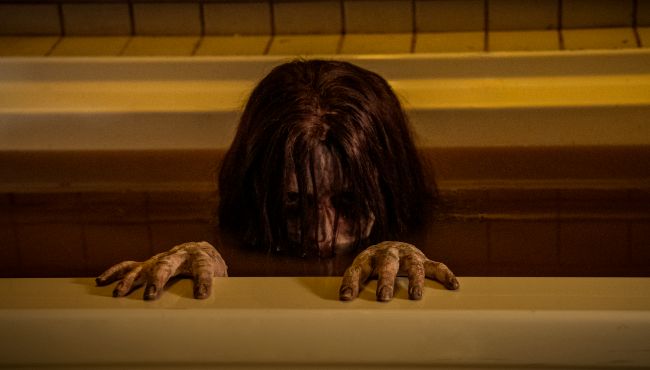
We start off the bottom 10 with a film that instantly found its way on a lot of people’s worst of lists only three days into the year. January 2020 was a very rough month for horror, a genre that fortunately managed to pull itself out of a very early nose dive to do quite well last year. And while The Grudge was far from the worst horror film of the first couple months of 2020 (more on that shortly), it was the exact opposite of good. Nicolas Pesce was hoping to breathe some life into the franchise based on the J-horror series by telling a parallel story in the United States to the 2004 Sarah Michelle Gellar-starring remake. That’s an interesting choice that had potential, but it ultimately fails because the characters just aren’t up to snuff.
And that is not a shot against the cast, who are all far better than the film they’re trying to save. John Cho, Andrea Riseborough, Betty Gilpin, Lin Shaye, and the rest do what they can here and lift the material as best they can. But there just isn’t enough the characters for any of them to inhabit. The story of the film’s curse infecting a small Pennsylvania town gives us nothing but paper-thin snapshots of misery thrown into a blender with the franchise’s nonlinear story — a tradition that has had increasingly diminishing results — and shot with a drab, thrill-less look. Pesce knows how to create mood quite well and there’s a couple of jump scares, but there’s no sense of dread or terror to be found here. Everything is thoroughly predictable and any slightly-educated guess you might make while watching will probably come true. Expectations were already fairly low on this one, but it still managed to disappoint. I loved the 2004 Grudge (to say nothing of the Japanese franchise), but this feels like a clear indication that it’s time to let the American franchise die.
#9: Antebellum
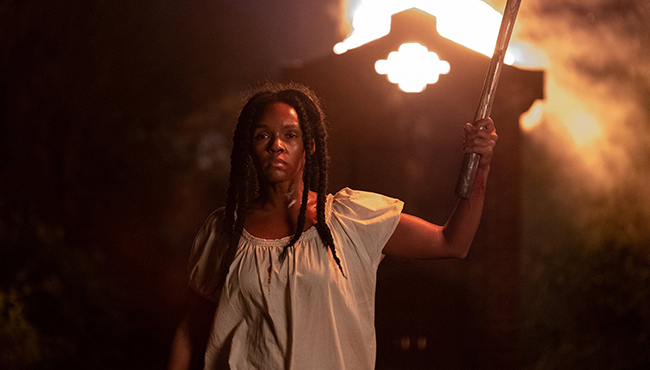
Welcome to the most infuriating and disappointing film of 2020, folks. Antebellum sells itself as a film from the people who brought you Get Out and Us, and it certainly wants you to think it’s going to be along those lines of horror. But the gulf between Jordan Peele’s wickedly sharp, biting films and this collection of wasted opportunities from Gerard Bush and Christopher Renz is very, very vast. Peele’s films were immediate cultural zeitgeists that had a lot to say between the lines of their entertaining storylines. On the flip side, one of Antebellum’s biggest problems is that it isn’t really trying to say anything. Bush and Renz have talked a big game about how they wanted to start conversations that need to be had about race in America here. And of course that’s admirable, but your film actually needs to speak for the conversation to start.
Instead, the two run through the same kinds of tropes of slavery-era brutality on Black people that we’ve seen a hundred times or more before. There are many problems with this; for one, while we see plenty of that we learn almost nothing about the people that the violence is perpetrated on. We only learn a very small handful of names, and of those we do barely anything is known up to and including Eden, the main character played by Janelle Monae with far more dignity that the script gives her. I’m sure in Bush and Renz’s mind, this was necessary to maintain the mystery of the film. But it also means that nearly a full half of this film is just violence on Black people without meaning or context. I’m not one to link to other people’s work to provide my arguments for me, but in this case I would refer you to read this essay on the movie by Angelica Jade Bastién for Vulture, because she very clearly expresses this issue better than I can and just aping those sentiments would be disingenuous.
All of that brutality might have some value if Antebellum came up with anything to say in the other two acts. But it doesn’t. Instead as we flash to Monae playing an author named Veronica, we get the set-up that something isn’t all that it’s cracked up to be here. Great, but the issue here is that the mystery is easy to figure out very early in the film and by the time the twist happens we’re like, “Yep, there it is” and any dramatic weight is gone because they couldn’t be subtle in their foreshadowing. Antebellum tries to make a couple salient points in the closing moments without spelling them out explicitly. The problem is, when your film has been this strange combination of blatantly on the nose but also content to not say anything remotely new, subtlety doesn’t fly as an epilogue. I had a lot of high hopes for Antebellum, and almost every single one of them was dashed.
#8: Dolittle
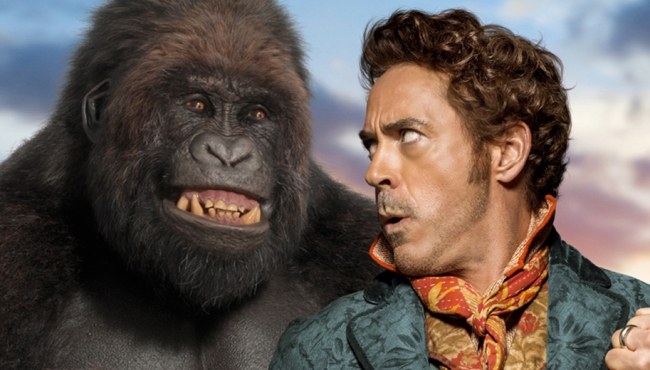
Hugh Lofting’s classic Doctor Dolittle novels have been a source of versatile inspiration for Hollywood. The books about an eccentric doctor who can talk to animals has been adapted into everything from musical comedies and plays to Eddie Murphy’s five-part film franchise, with varying levels of success. But they’ve also always been a bit of an odd duck (excuse the pun) in terms of films; the Rex Harrison musical was panned and a financial failure, while even the successful Murphy films quickly fell off a cliff into straight-to-video territory (at which point Murphy fled the franchise).
So why in the name of all that’s holy, with so much evidence that these aren’t incredibly sought-after movies, did Universal Pictures think that spending an astounding $250 million to make a fantasy adventure flick was a good idea? The answer lies in star Robert Downey Jr., perhaps the most marketable name in Hollywood. Credit to Downey for swinging big, but even his considerable charisma can’t save this tired story that coasts its way through on the hopes that the visuals and lame jokes might make people forget the meandering story. Stephen Gaghan is a particularly strange fit as a director; the man behind Syriana and Gold is completely out of his element here and it shows. The production on Dolittle was notoriously troubled, with massive reshoots when it was realized the comedy wasn’t working. I don’t know what they changed, but the comedy doesn’t work in the finished product either as the voice actors mostly ham it up with a lot of body humor and the like. And that stuff has its place, but it’s not in a film like this. Meanwhile, Downey is essentially playing a minor variation on his Sherlock Holmes interpretation and doesn’t offer anything really new, more or less ambling his way through the movie without direction.
The most puzzling thing about Dolittle is that for all the money spent on it, it doesn’t look that good. There are moments where the CGI animals take the audience completely out of the moment, and the action doesn’t do anything to impress. Dolittle actually could have worked if Universal and Team Downey had wanted to make a mid-budget period comedy, but trying to supersize it into the animal Avengers is a disastrous decision that makes the film an absolute flop by any definition you can imagine.
#7: Artemis Fowl
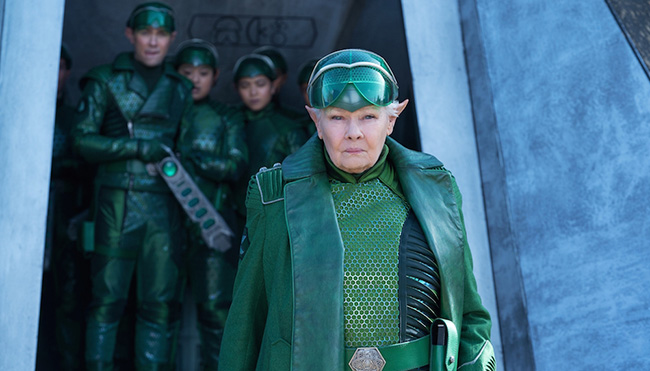
Speaking of films unworthy of their budget…on the surface, the idea of an Artemis Fowl film is something I can see studio executives absolutely salivating after. Young adult adaptations have been all the rage for years despite their increasingly lessened returns, and Eoin Colfer’s novels about a young criminal mastermind working within a fantasy setting is just the thing for movie studios to try and latch onto in hopes of Harry Potter-like success. But man, did these plans turn sour. The film languished in development hell for over a decade until Kenneth Branagh became attached, and by the time this came out in June of last year the bloom wasn’t just off the rose for these kinds of films; the entire vine had died and rotted away.
To be fair, even if it had been released in its final form during the heyday of the Boy with the Lightning-Shaped Scar this would have been a disaster. The script by Conor McPherson and Hamish McColl makes changes that alienate fans of the source material without doing anything to make it more palatable to newcomers. The plot is a whole lot of nonsense, told in voiceover flashback from a scenery-chewing Josh Gad about the young rich son of a disgraced artifact thief who gets himself insinuated into a fairy war. No one escapes from this morass of often bad CGI with their dignity intact — not Gad, not Branagh, not Colin Farrell as the titular character’s father and certainly not Judi Dench, looking annoyed by her goofy costuming and silly dialogue. Look, I know this film wasn’t made for people of my age range, but I enjoy a lot of young adult adaptations and am always down for some fantasy fun. The plot is too murky for kids, the humor is too dumb for adults, the action is too chaotic for everyone, and the whole thing stinks of exactly why films like this probably shouldn’t be made. It’s lacking in any real sense of wonder or awe, a derivative mess of hashed together ideas into a $125 million spectacle of emptiness.
#6: Brahms: The Boy II
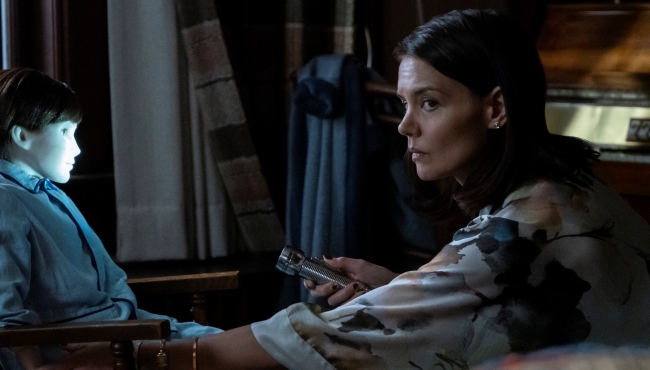
William Brent Bell must be stopped. No, really. Most people wouldn’t recognize that name, but horror hounds may recall his past “contributions” to the genre. Bell has directed some of the more risible horror films in the last several years, notably The Devil Inside and Stay Alive. Of his filmography, The Boy is perhaps the best effort to date but that’s in no way a compliment. The 2016 film about a possible killer doll was a dull, overly serious film that couldn’t acknowledge its ridiculous story, but at least had a few fun performances in it.
Last year’s sequel Brahms: The Boy II doesn’t even have that going for it. The flick about a family that moves into a mansion following a a home invasion features Bell’s melodramatic tone from the first film and a script from Stacey Menear that is more or less incompatible with the first entry, at least in terms of any kind of continuity. Without spoiling anything, The Boy ended with a plot twist that is completely ignored in this film because they thought they could get another minor hit out of the creepy doll concept. Instead they got a film with all the negative hallmarks of the first one. The script is drab, with Bell carrying over an overly-serious tone. There’s a monotonous sort of melodrama in the editing and direction that completely belies the premise. But not content to stop there, Bell also adds some incredibly bad CGI and a collection of muted performances. Katie Holmes is better than this, but you certainly wouldn’t know it from her half-hearted work here. There’s a whole lot wrong with Brahms, but the biggest might just be why anyone felt they had to make a follow-up at all if this was going to be the result.
#5: The Last Days of American Crime

As I mentioned earlier this week, Netflix put out some great films in 2020 but also some really abysmal entries. Close to the absolute forefront of the latter category is The Last Days of American Crime. Olivier Megaton is by no means a director whose name excites people; he’s best known for “diminishing return” sequels like Taken 2, Taken 3, and The Transporter 3. This nihilistic action-thriller is one of his few original films and if this is representative of his resume I’d rather he stick to derivative sequels. Based on a 2009 graphic novel from Rick Remender and Greg Tocchini, this overlong disaster of a film stars Edgar Ramirez as a criminal in a dystopian future where crime is about to be made impossible by virtue of a signal that will be broadcast nationwide. He’s enticed into committing the last big heist in American history by Michael Pitt’s loser rich boy Kevin Cash, and it’s all downhill from there.
There’s so much wrong with this film that it’s hard to even know where to start. That said, I think the biggest problem is its length. It stands at just a hair under two and a half hour, which is interminable for a movie that would have felt overlong at an hour and forty minutes. The length issues are compounded by Karl Gajdusek’s script, which is full of loathsome characters passing off cliche after cliche in the place of actual dialogue. Megaton’s visual palette seems to simply consist of the mission statement “make it ugly,” which I suppose makes it fit the misanthropic theme but sure doesn’t make it enjoyable. The cherry on top are the performances, which are mediocre to terrible. Ramirez has never shown less charisma than he does here, Pitt is hamming it up to the nth degree, as is Sharlto Copley as a cop gone bad. Making it through this film seems like a marathon achievement of enduring tedium and by the end (if you haven’t already shut it off) you’re just happy that it’s over.
#4: Stardust

There really should be a simple rule for making biopics of musical artists: If you can’t secure the musical rights for their catalog, then don’t make the damned movie. It’s never worked out well for a variety of reasons, but most obviously because if you don’t have the music, the film feels empty. Stardust absolutely has that issue. But surprisingly (and infuriatingly), a lack of David Bowie songs is not actually the biggest problem with this film. Gabriel Range and Christopher Bell almost admirably get around that issue for much of the film by way of the premise, which sees Bowie on his first US tour when due to visa issues he wasn’t able to perform. There are still moments in a couple of where it’s a painfully noticeable; it’s just glaring to see a movie about David Bowie without any David Bowie songs. But this could have been a passable film with that limitation.
The much bigger problem with Stardust is that Range seems to have no idea how he wants to present Bowie. Played by Johnny Flynn, who neither looks like Bowie nor gives a performance that ever once feels like the icon, our protagonist is robbed of his essence entirely by the script. Flynn has charm, but he can’t get a good picture of who his subject is. Instead, we get an only very occasionally-diverting road trip between Bowie and his publicist Ron Oberman, played by Marc Maron in a role reminiscent of most Marc Maron characters. No one else registers here, not Jena Malone as Bowie’s wife Angela in an extremely underwritten role, nor Derek Moran as Bowie’s half-brother Terry Jones, who was incredibly troubled and who stands in as the conflict for our protagonist.
There’s nothing about Stardust that pops in a viewer’s mind. Let me emphasize that: nothing in a film about David Bowie, one of the boldest and most vibrant performers of all time, pops. Range shoots the film in a washed-out, low-key visual style that seems like it is supposed to represent the era but instead just looks lifeless. That’s not helped by the way the film lacks completely in energy. There’s nothing remotely worth spending time with here. It’s entirely forgettable, and that’s a sin I just can’t forgive considering the subject matter.
#3: The Jesus Rolls
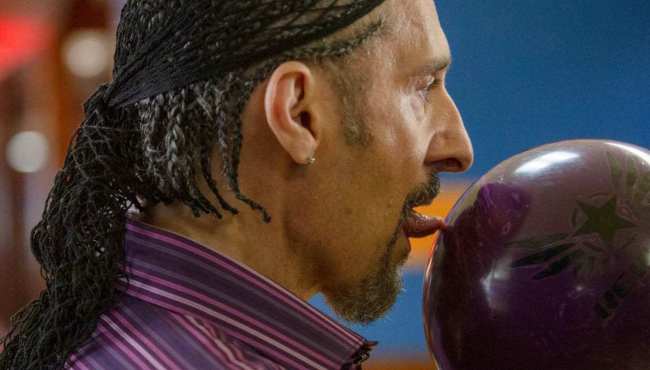
The Big Lewboski is an absolute favorite of cinephiles among the Coen Brothers’ resume. The 1998 crime comedy introduced audiences to instant classics from The Dude and Walter Sobchak to Bunny, Donny, and many others. One of the most memorable was the one and only Jesus Quintana, played to the hilt for creepy laughs by John Turturro. Jesus was an instant hit with fans and with Turturro to the point that while the Coens have vowed never to make a sequel to Lebowski, Turturro has long held out hope. Eventually, he just decided to do it himself and got the Coens to give him permission to make a sequel. That brings us to The Jesus Rolls, which places Jesus in the middle of a loose remake of the sex comedy Going Places in which he wanders around with his friend Petey (Bobby Cannavale) and free spirit Marie (Audrey Tatou) into vignette after vignette.
There is no real central plot to The Jesus Rolls, and that’s fine. Cohesive plots aren’t necessarily needed if if you can deliver a feel or a mood, or some other narrative or thematic goal. The problem is, Tuturro fails at that too. Everything here feels pointless and remarkably laugh-free. Audrey Tatou is a joy to watch as Marie, but Cannavale doesn’t register much as Petey. And as good as Turturro can be, Jesus falls firmly in the category of great supporting characters who don’t make good lead characters. He was always intended to be a collection of tropes put into a single set of jokes; given his own film to wander, it all falls flat. The Jesus Rolls wants to be a little bit of both Lebowski and Going Places, but it’s just a little bit off the beat for both which resulting in a thoroughly dissonant and unenjoyable experience.
#2: The Turning

As high as horror rose in some instances in 2020, it hit some real lows as well. The lowest of those points came at the very start of the year with The Turning. This 1990s-set film is actually one of two 2020 adaptations of The Turn of The Screw, the other being the Netflix series, and the gulf between the two could hardly be any wider. The film has a solid pedigree, coming from director Floria Sigismondi (The Runaways) and the Hayes Brothers, who also wrote The Conjuring and its sequel. But while Sigismondi is able to add some style to the proceedings, she still has to work with a painfully bad script that is lifeless even before it jumps off a cliff in that way that few other films ever do.
The Turning follows the same general beats as James’ story, but everything about it just feels off — and not in a good, unnerving way that would befit a horror film. Mackenzie Davis is lost in the lead role of the newly-hired governess taking care of two children, Miles and Flora, in the wake of their mother’s disappearance. And in the roles of the children, Finn Wolfhard and Brooklynn Prince are intolerable. Their performances fit the characters they’ve been given, but those characters are truly the worst whether its Miles being a creeper and sexual harasser or Flora throwing constant fits. Sigismondi guides the film with an meandering pace that makes its 93 minutes feel like two hours and a subplot involving the unwell mother of Davis’ character doesn’t try to do anything until it all goes wrong.
And my, how it goes wrong. The final act is just a disaster on every level to a point we haven’t seen since The Devil Inside ended in 2012 with an advertisement for a website if you wanted to know how it ended. Everything about this end is infuriating, undoing any remote goodwill that the previous 80 minutes or so might have managed to scrape together. Everything about The Turning is bad, but it’s the final minutes that actively push it off the ledge and sends it screaming to the bottom of 2020’s horror pile.
#1: The Wrong Missy

I need some help with The Wrong Missy, because I can’t tell what part of it was supposed to be funny. Was it the two sexual assaults in the first 37 minutes, or Lauren Lapkus vomiting chum into a shark cage? Because that’s what Happy Madison comedy has come to in 2020. This seems to be the result of Adam Sandler’s production company being able to output their ideas on Netflix: we don’t have to see it in theaters, but they really do get to do what they want. And what they want is abjectly awful. Case in point: this film, in which David Spade’s schlubby sales executive tries to text a meet-cute to join him on a corporate retreat but instead texts a nightmare blind date because they have the same name.
That set-up is mildly clever, and to her credit Lapkus does her damnedest to make the comedy work despite being saddled with the most over-the-top irritating, offensive character she could have. And listen, that’s the point of Missy. It’s not fine at all; it’s almost physically grating to watch for several scenes, but it is what it is. That said, “what it is” is also an infuriating role given to a talented comedic actress who is trying her best to generate laughs next to David Spade and his wet sponge of a performance. The plot is really just window dressing what Happy Madison considers a typical comedy. And yes, that means the laziest attempts at gags that you can imagine. It means gross-out humor that is less funny than it’s perhaps ever been. It also means cameos by Nick Swardson and Rob Schneider, playing your stock unfunny Nick Swardson and Rob Schneider characters. It means legitimately lethal levels of pratfalling and the cringiest of cringe humor you can find, almost none of which land. There is nary a minute of this 90 minute film that I didn’t despise. Humor hits different for everyone, and comedy is the hardest genre to be critically evaluating of, but my official review in short is this: fuck this movie, which is undoubtedly my worst film of 2020.
And that will do it for this! Join me next week as, with the bad out of the way, we take a look at the best films of the year. Until then, have a good one and don’t forget to read the many other great columns, news articles and more here at 411mania.com! JT out.







